SPRINGER BRIEFS IN COMPUTER SCIENCE
David Gerónimo · Antonio M. López
Vision-based
Pedestrian
Protection Systems
for Intelligent
Vehicles
�
SpringerBriefs in Computer Science
Series Editors
Stan Zdonik
Peng Ning
Shashi Shekhar
Jonathan Katz
Xindong Wu
Lakhmi C. Jain
David Padua
Xuemin Shen
Borko Furht
V. S. Subrahmanian
Martial Hebert
Katsushi Ikeuchi
Bruno Siciliano
For further volumes:
http://www.springer.com/series/10028
�
David Gerónimo • Antonio M. López
Vision-based Pedestrian
Protection Systems for
Intelligent Vehicles
123
�
David Gerónimo
Antonio M. López
Computer Vision Center
Universitat Autònoma de Barcelona
Bellaterra, Barcelona
Spain
ISSN 2191-5768
ISBN 978-1-4614-7986-4
DOI 10.1007/978-1-4614-7987-1
Springer New York Heidelberg Dordrecht London
ISSN 2191-5776 (electronic)
ISBN 978-1-4614-7987-1
(eBook)
Library of Congress Control Number: 2013940300
Ó The Author(s) 2014
This work is subject to copyright. All rights are reserved by the Publisher, whether the whole or part of
the material is concerned, specifically the rights of translation, reprinting, reuse of illustrations,
recitation, broadcasting, reproduction on microfilms or in any other physical way, and transmission or
information storage and retrieval, electronic adaptation, computer software, or by similar or dissimilar
methodology now known or hereafter developed. Exempted from this legal reservation are brief
excerpts in connection with reviews or scholarly analysis or material supplied specifically for the
purpose of being entered and executed on a computer system, for exclusive use by the purchaser of the
work. Duplication of this publication or parts thereof is permitted only under the provisions of
the Copyright Law of the Publisher’s location, in its current version, and permission for use must
always be obtained from Springer. Permissions for use may be obtained through RightsLink at the
Copyright Clearance Center. Violations are liable to prosecution under the respective Copyright Law.
The use of general descriptive names, registered names, trademarks, service marks, etc. in this
publication does not imply, even in the absence of a specific statement, that such names are exempt
from the relevant protective laws and regulations and therefore free for general use.
While the advice and information in this book are believed to be true and accurate at the date of
publication, neither the authors nor the editors nor the publisher can accept any legal responsibility for
any errors or omissions that may be made. The publisher makes no warranty, express or implied, with
respect to the material contained herein.
Printed on acid-free paper
Springer is part of Springer Science+Business Media (www.springer.com)
�
Preface
i.e.,
This book is a natural evolution of the survey paper we published in the IEEE
Transactions on Pattern Analysis and Machine Intelligence [121]. Therefore, we
have followed the same point of view. On the one hand this means that we focus
on vision-based solutions for pedestrian detection. Moreover, although we include
some references from fields such as surveillance, robotics, and multimedia, the
backbone context of the book is driver assistance,
the development of
pedestrian protection systems. On the other hand, we have organized the literature
according to the main stages that a vision-based pedestrian protection system must
incorporate. Moreover, we do not focus on the mathematical formalism behind
each proposal. Rather, we try to explain the overall ideas so that interested readers
can go to the original references to look into the details. Because of that, we think
that novel researchers in this field, from the academia or the industry, can take
benefit of this book. At this moment, [121] has received already more than 140
cites. We have informally collected feedback from some readers of [121] and we
are glad to say that it seems that this paper accomplished its purpose, namely to
give a quick overall organized idea of the field to novel researchers and even to
experienced researchers of other fields (e.g., it was interesting to discuss with
researchers of the machine learning community about detection vs classification).
Thus, we hope that in the same line this book can be useful even for more
researchers.
In this book more than 300 papers are referenced, which gives an idea of the
enormous interest that vision-based pedestrian detection has deserved from both
the computer vision and the intelligent transportation systems communities. We
include more than 190 references that were not included in [121], more than 80
published after [121], which shows how active this field is. In spite of the amount
of papers we reference, there are also many more that have not been included. We
apologize for that, since all published works deserve their own acknowledgment
given the effort of the authors. However, even a book like this one needs to limit
the space in order to keep on focus. We do not provide a sort of best papers
ranking, but we have chosen those papers that better allow us to illustrate the
diversity of solutions available in the literature. Of course, this implies that papers
that presented breaking ideas along this past decade are included.
v
�
vi
Preface
It is worth to mention that vision-based pedestrian detection is a subfield of
object detection in videos, which in turn deserves its own book given the enormous
corpus of proposals generated so far thanks to advances in topics such as machine
learning, image descriptors, computational power, etc. This means that some
general object detection methods can be applied to pedestrian detection. However,
we have focused on the literature that explicitly addresses pedestrian detection in
its own. As we will see, modern pedestrian/object detectors mainly rely on image
descriptors (features), pedestrian/object models (e.g., holistic, multi-aspect, part-
based, etc.), and learning machines (e.g., SVM and AdaBoost variants). In this
book we focus our explanations on the content more specifically related to vision,
i.e., pedestrian image descriptors and models. While the machine learning algo-
rithms used in the reviewed literature are of course mentioned, explaining how
such algorithms work is out of the scope of the book.
This book is not done only thanks to the work of the authors, but many more
persons and institutions must be acknowledged. First, we thank to the pedestrian
detection community itself for addressing such a challenging and socially relevant
problem. We thank also Springer for giving us the opportunity of writing this book.
We thank to our daily collaborators at the Computer Vision Center (CVC) of
Barcelona as well as at the Department de Ciències de la Computació of the
Universitat Autònoma de Barcelona (UAB). Special thanks to the administrative
and support staff who makes research easier. Many thanks to all the members of the
CVC-ADAS group (www.cvc.uab.es/adas) for the hard work along the 10 years of
life of the group and for being people that we really enjoy to work with. Special
thanks also to David Váquez, Javier Marín, and Jiaolong Xu for kindly helping us to
explain better some parts of this book. We want to give thanks also for the public
funding we have received along the last years to support our research in the driver
assistance context. In particular, we thank the following projects from the Spanish
Government: TRA2011-29454-C03-01, TIN2011-29494-C03-02, TIN2011-25606,
TRA2010-21371-C03-01, Consolider Ingenio 2010: MIPRCV (CSD2007-00018),
TRA2007-62526/AUT, and TRA2004-06702/AUT.
Antonio M. López also wants to thank his Ph.D. supervisor Joan Serrat, as well
as mentors Juan José Villanueva, and Bart M. ter Haar Romeny. Good supervisors
and mentors are key for having a successful career, these boys are. Equally
important is to have good Ph.D. students who help you to stay updated and active
in the frontier of the research. Accordingly, thanks also to Antonio’s Ph.D. stu-
dents Daniel Ponsa, David Gerónimo, José M. Álvarez, David Vázquez, Javier
Marín, Diego Cheda, Yainuvis Socarrás, Muhammad Rao, Jiaolong Xu, and Se-
bastián Ramos. In addition, many thanks also to researchers who have hosted these
students during researcher stages and with whom I have enjoyed research and life
discussions. Thus, many thanks to Theo Gevers, Krystian Mikolajczyk, Ludmila
Kuncheva, Dariu Gavrila, Bastian Leibe, and Frédéric Lerasle. Thanks also to
other CVC-ADAS Ph.D. students with whom I have actively collaborated as
Carme Julià, Ferrán Diego, José C. Rubio, and Germán Ros. As head of the CVC-
ADAS team, Antonio also wants to give special thanks to the members who fought
to build the team from the scratch, namely Joan Serrat, Felipe Lumbreras, Angel
�
Preface
vii
D. Sappa, and Daniel Ponsa. Antonio wants to thank also the private companies
that trusted the CVC-ADAS team to develop some ADAS-related projects, in
particular,
thanks to Volkswagen A.G. at Wolfsburg (Thorsten Graf, Jörg
Hilgenstock) and SEAT Centro Técnico of Martorell. Finally, Antonio wants to
apologize with the family, specially with his parents, Antonio and Iluminada, his
brother Juan, and specially with his wife Ana for stolen so many time supposed to
be free-time for attending the research, many thanks for the enormous patience and
support.
David Gerónimo wants to thank his former Ph.D. supervisor and currently
research collaborator Antonio M. López for the guidance and support during the
last 8 years. Day by day, his attitude toward research has been an inspiring source
for him to improve as a researcher. Many thanks also to his collaborators, research
fellows and friends for the long and fruitful discussions: Angel D. Sappa, Joan
Serrat, Daniel Ponsa, José M. Álvarez, David Vázquez, Javier Marín, Didier
Devaurs, Hirofumi Uemura, Alejandro Mosteo, David Aldavert and Xuan Zou.
Thanks also to David’s hosts during research stays in Surrey and LAAS-CNRS,
Krystian Mikolajczyk and Frédéric Lerasle, for their warm welcome to their labs.
Finally, David wants to thank his family, specially to his parents Angel and Núria,
and his sister Sara, for their support. Finally, David’s most sincere acknowledg-
ments are addressed to his wife Verónica, for her understanding and never-ending
support, specially during the long and untimely hours spent in research.
�
Contents
1
Introduction . . . . . . . . . . . . . . . . . . . . . . . . . . . . . . . . . . . . . . . .
1.1 Automobile’s Impact . . . . . . . . . . . . . . . . . . . . . . . . . . . . . . .
1.2 Advanced Driver Assistance Systems. . . . . . . . . . . . . . . . . . . .
1.3 Pedestrian Protection Systems . . . . . . . . . . . . . . . . . . . . . . . . .
1.4 The Role of Computer Vision . . . . . . . . . . . . . . . . . . . . . . . . .
1.5 Generic Framework . . . . . . . . . . . . . . . . . . . . . . . . . . . . . . . .
1.6 Book Outline . . . . . . . . . . . . . . . . . . . . . . . . . . . . . . . . . . . .
2 Candidates Generation. . . . . . . . . . . . . . . . . . . . . . . . . . . . . . . . .
2D-Based Approaches . . . . . . . . . . . . . . . . . . . . . . . . . . . . . .
2.1
2.2
3D-Based Approaches . . . . . . . . . . . . . . . . . . . . . . . . . . . . . .
2.3 Motion-Based Approaches . . . . . . . . . . . . . . . . . . . . . . . . . . .
2.4 Discussion . . . . . . . . . . . . . . . . . . . . . . . . . . . . . . . . . . . . . .
3.1.1
3.1.2
3.1.3
3 Classification . . . . . . . . . . . . . . . . . . . . . . . . . . . . . . . . . . . . . . . .
3.1 Preliminary Concepts . . . . . . . . . . . . . . . . . . . . . . . . . . . . . . .
Image Descriptors . . . . . . . . . . . . . . . . . . . . . . . . . . .
Pedestrian Models . . . . . . . . . . . . . . . . . . . . . . . . . . .
Pedestrian Classifiers . . . . . . . . . . . . . . . . . . . . . . . . .
3.2 Holistic Models: Focus on the Features . . . . . . . . . . . . . . . . . .
Templates . . . . . . . . . . . . . . . . . . . . . . . . . . . . . . . . .
3.2.1
Haar Features . . . . . . . . . . . . . . . . . . . . . . . . . . . . . .
3.2.2
Edge Orientation Histograms Features . . . . . . . . . . . . .
3.2.3
Histogram of Oriented Gradients Features . . . . . . . . . .
3.2.4
Shapelet Features. . . . . . . . . . . . . . . . . . . . . . . . . . . .
3.2.5
Local Binary Pattern Features . . . . . . . . . . . . . . . . . . .
3.2.6
Dominant Orientation Template Features . . . . . . . . . . .
3.2.7
Co-Occurrence Features . . . . . . . . . . . . . . . . . . . . . . .
3.2.8
3.2.9
Covariance Features. . . . . . . . . . . . . . . . . . . . . . . . . .
3.2.10 Data-Driven Features . . . . . . . . . . . . . . . . . . . . . . . . .
1
1
4
5
7
8
9
13
13
17
20
20
23
24
24
25
26
26
26
30
32
33
36
36
38
39
42
43
ix
�
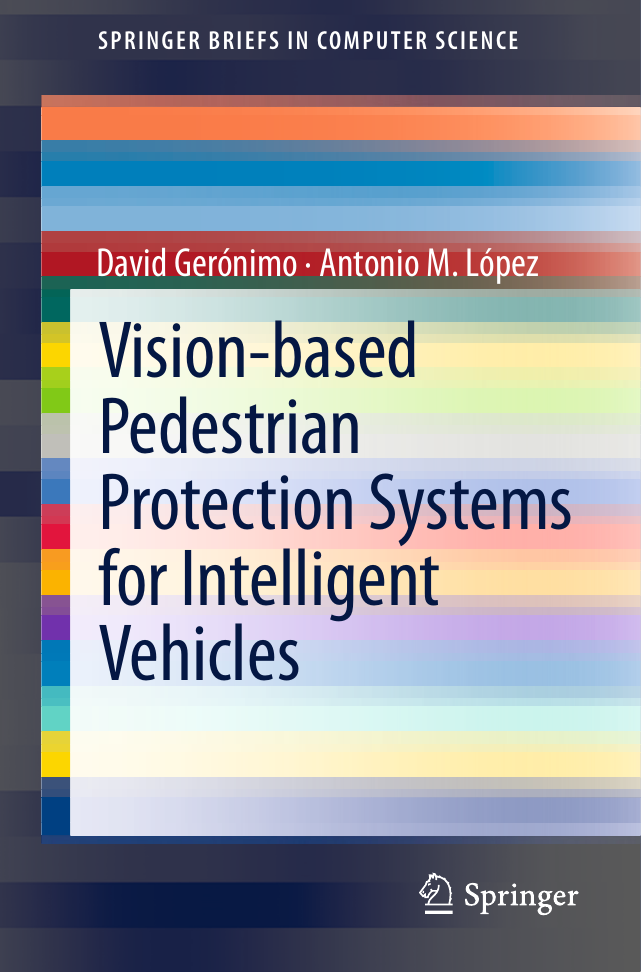
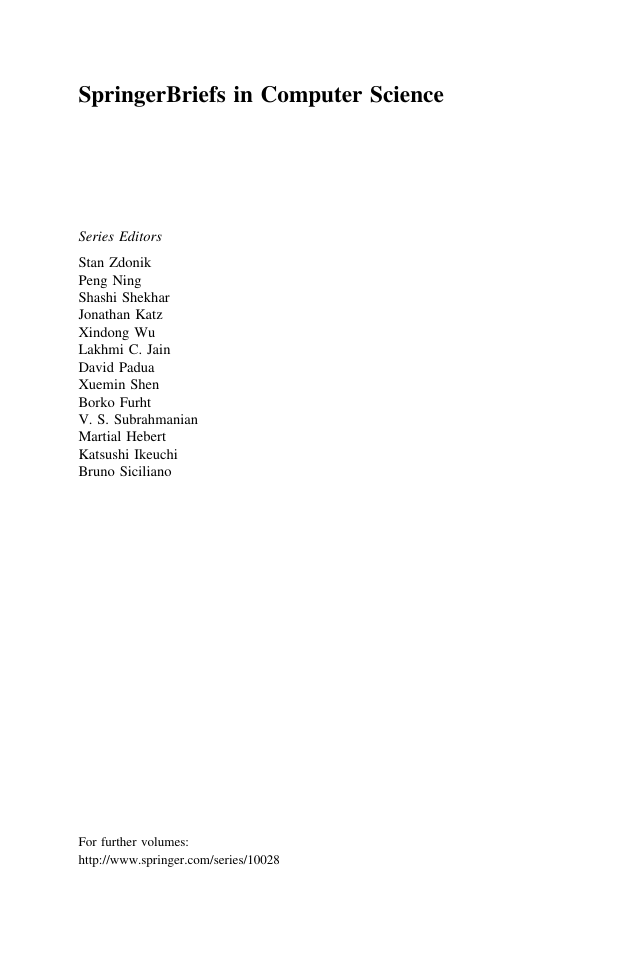
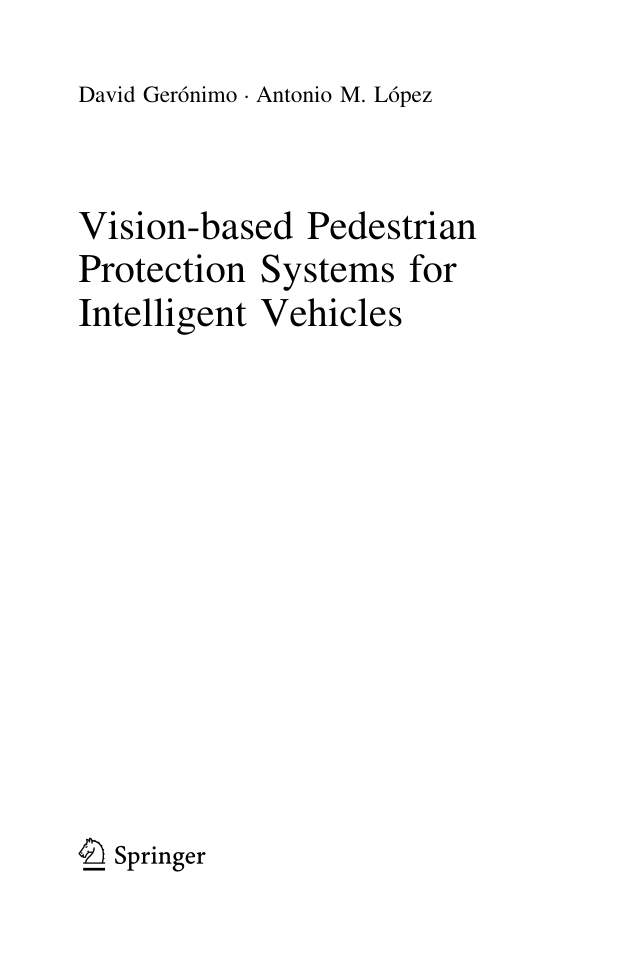
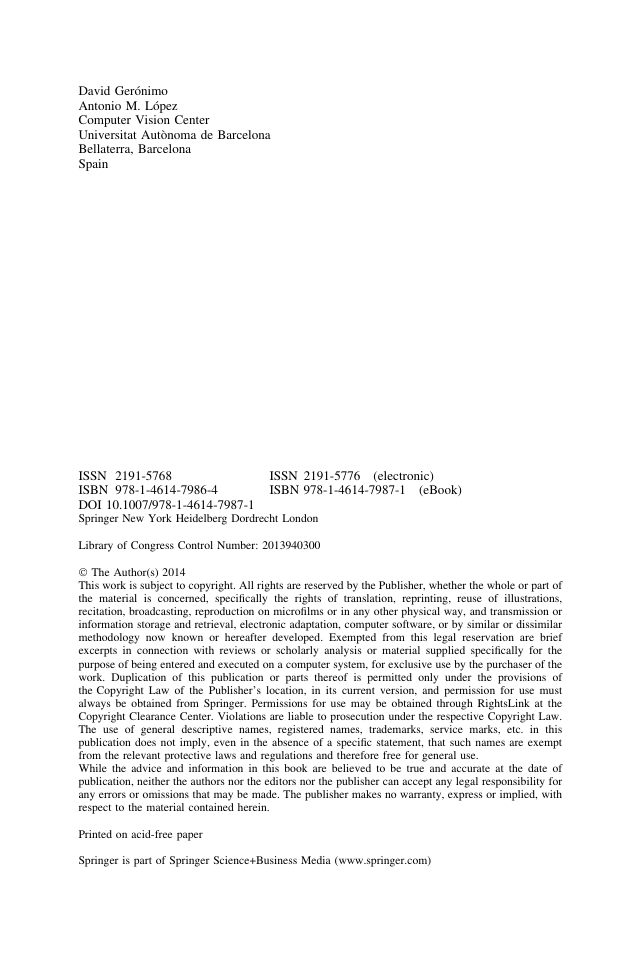
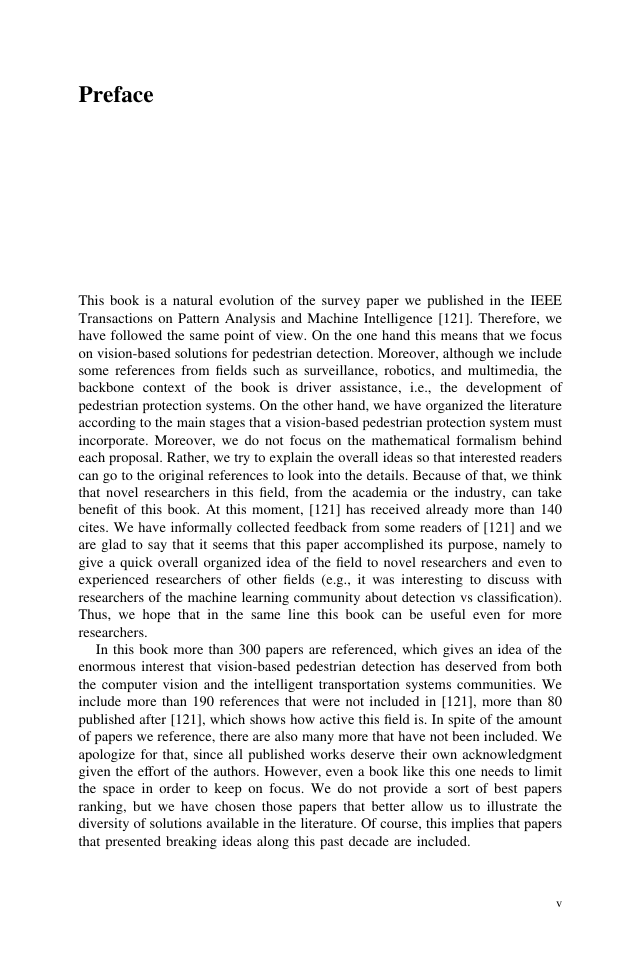

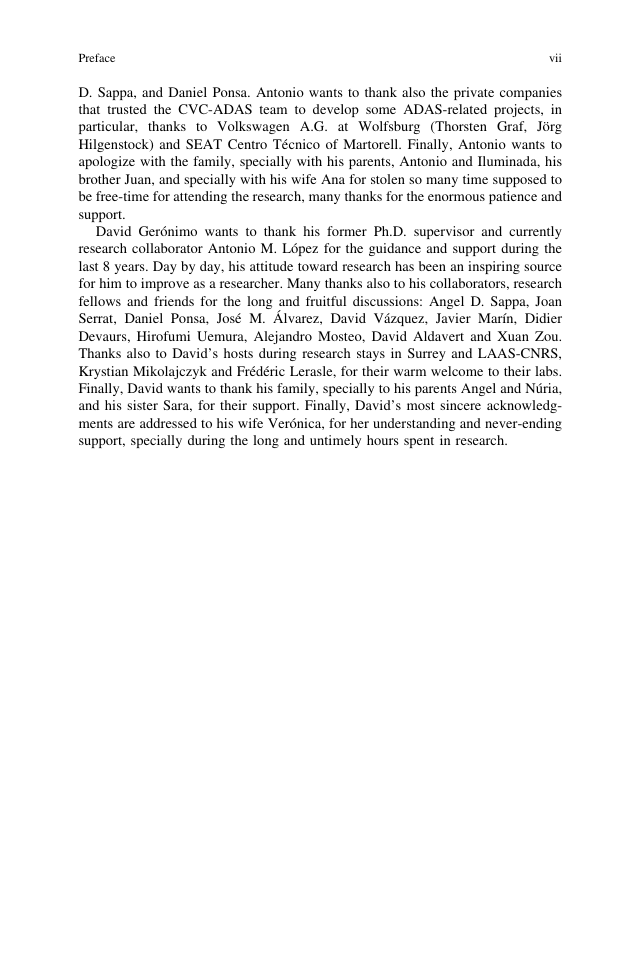
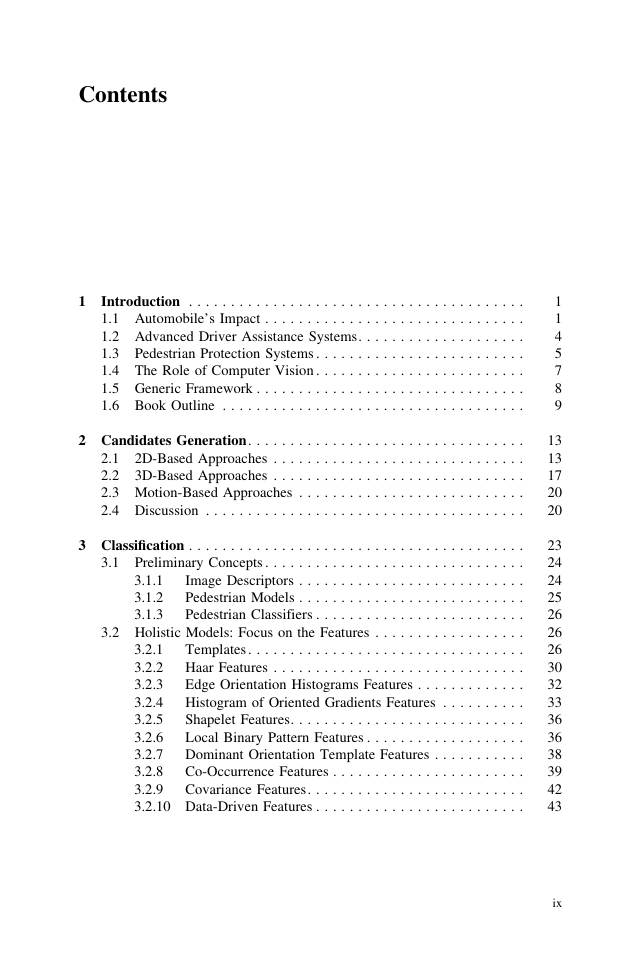








 2023年江西萍乡中考道德与法治真题及答案.doc
2023年江西萍乡中考道德与法治真题及答案.doc 2012年重庆南川中考生物真题及答案.doc
2012年重庆南川中考生物真题及答案.doc 2013年江西师范大学地理学综合及文艺理论基础考研真题.doc
2013年江西师范大学地理学综合及文艺理论基础考研真题.doc 2020年四川甘孜小升初语文真题及答案I卷.doc
2020年四川甘孜小升初语文真题及答案I卷.doc 2020年注册岩土工程师专业基础考试真题及答案.doc
2020年注册岩土工程师专业基础考试真题及答案.doc 2023-2024学年福建省厦门市九年级上学期数学月考试题及答案.doc
2023-2024学年福建省厦门市九年级上学期数学月考试题及答案.doc 2021-2022学年辽宁省沈阳市大东区九年级上学期语文期末试题及答案.doc
2021-2022学年辽宁省沈阳市大东区九年级上学期语文期末试题及答案.doc 2022-2023学年北京东城区初三第一学期物理期末试卷及答案.doc
2022-2023学年北京东城区初三第一学期物理期末试卷及答案.doc 2018上半年江西教师资格初中地理学科知识与教学能力真题及答案.doc
2018上半年江西教师资格初中地理学科知识与教学能力真题及答案.doc 2012年河北国家公务员申论考试真题及答案-省级.doc
2012年河北国家公务员申论考试真题及答案-省级.doc 2020-2021学年江苏省扬州市江都区邵樊片九年级上学期数学第一次质量检测试题及答案.doc
2020-2021学年江苏省扬州市江都区邵樊片九年级上学期数学第一次质量检测试题及答案.doc 2022下半年黑龙江教师资格证中学综合素质真题及答案.doc
2022下半年黑龙江教师资格证中学综合素质真题及答案.doc